Master class on creating non-linear levels for singleplayer

In this article, we take a look at the talk from GDC 2019, in which Aubrey Serr presented the audience with an overview of methods for designing non-linear single-player sandbox levels.
In 2019 during the Game Developers Conference Aubrey Serre shared a talk with the developer community on methods for designing non-linear sandbox levels for single-player games, the unique advantages and challenges of non-linear levels, and how level designers can adapt these methods to linear levels.
In this article, I’ll break down that excellent talk and show you some great level design techniques that you can use to create the so-called radically non-linear levels that Serre introduced in his talk.

What is a radically nonlinear level?
First of all, we need to understand what a “radically nonlinear level” is. According to Serra, this is a sandbox level designed to encourage unpredictable player progression and exploration. This type of level is very distinctive and interesting, as it potentially reduces the likelihood that the player will get bored with the gameplay. The earliest and most textbook example of this level that Serre found was a map from Miss Pac-Man.
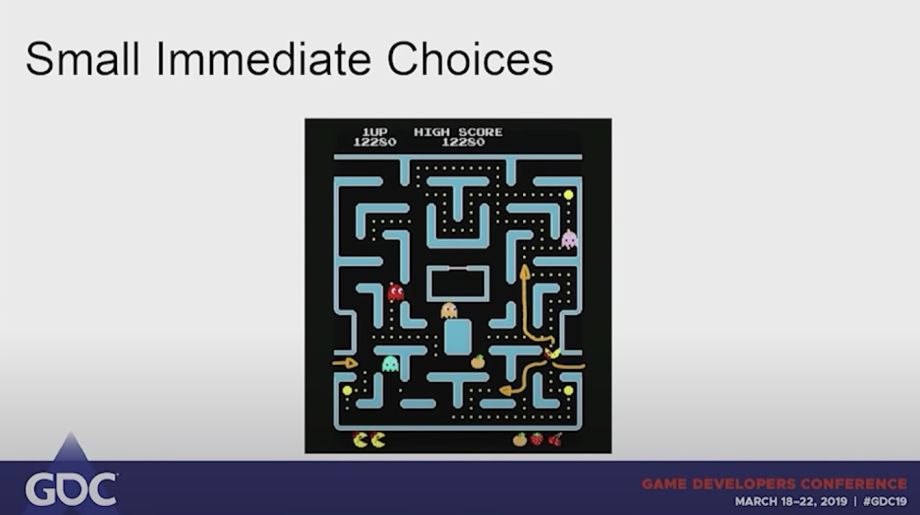
This map challenges the player to make tactical choices due to its openness, while also providing space for strategic choices due to its large area. Serre commented that Miss Pac-Man’s developer confirmed that each ghost has its own unique behavior pattern, making each ghost a unique risk factor that the player must consider.
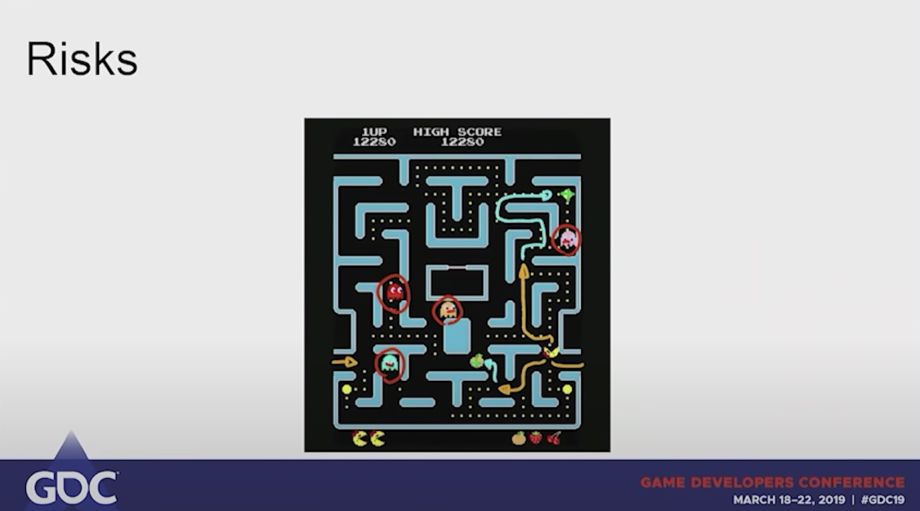
Serre mentions an additional list of factors that make the map in Miss Pac-Man a great example of a radically non-linear level:
It is small enough that the entire map is involved in the gameplay at once.
The map is complex enough to be interesting, yet observable enough to be predictable.
There is no way out of it. This is an important aspect of maps like this, Serra says, because usually players tend to explore the map first and then leave it.
Dynamic pace created by game timings. The player must take into account the paths, the location of power-up spheres, the movements of ghosts and other things in order to successfully complete the game.
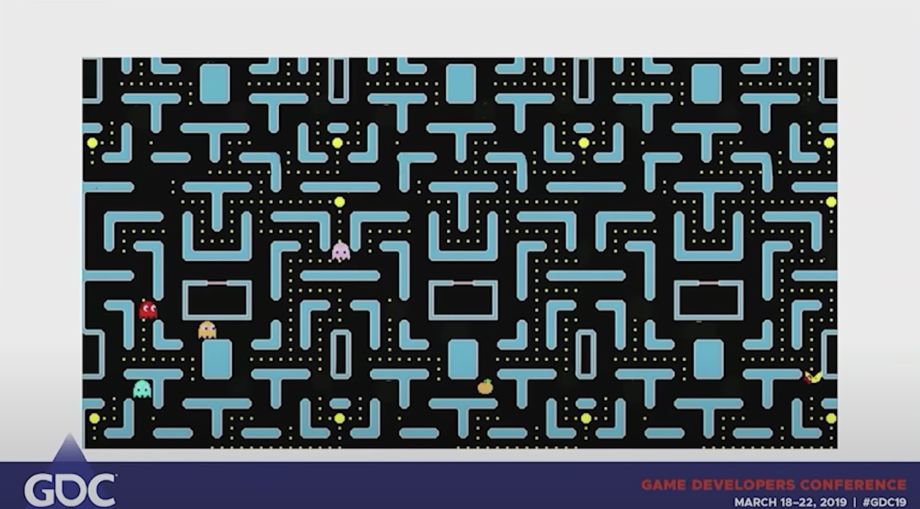
Serre mentions an important thing: radically non-linear levels ≠ open world maps. If this were an open world map, the rhythm of the game would be broken by the unlimited power-up orbs and the ability to run away from ghosts no matter the situation. In other words, the gameplay would be completely different.

After defining the term “radically non-linear levels”, Serre explains what makes such levels fun and cool in the eyes of the players:
One of the main reasons is that in the aforementioned games, the gameplay is more important than the story. These levels give the gameplay space to its fullest to the highest degree and help dispel boredom.
More room to unleash the potential of the gameplay means that the player has more freedom in terms of strategic and tactical decisions.
Map knowledge is very important for this type of level, so exploration is naturally rewarded.
Since there is no need to lead the player from point A to point B, it is possible to create destructible parts of the environment, and make NPCs on the level killable.
They also encourage dynamic and environmental storytelling with fewer artificial barriers, making it easier to display realistic locations and architecture.
And the main reason is that such levels give the player the opportunity to try new strategies and find new places on the map that can be used to achieve their goals.

How to create a radically non-linear level?
First of all, before you start working on a map, you should consider its layout. By creating good layouts, you can clearly distinguish each of the total cards you create, instead of end up with a mess of obstacles, enemies, and rewards. There are many different varieties of basic layouts, but Serre offers four fundamental examples.
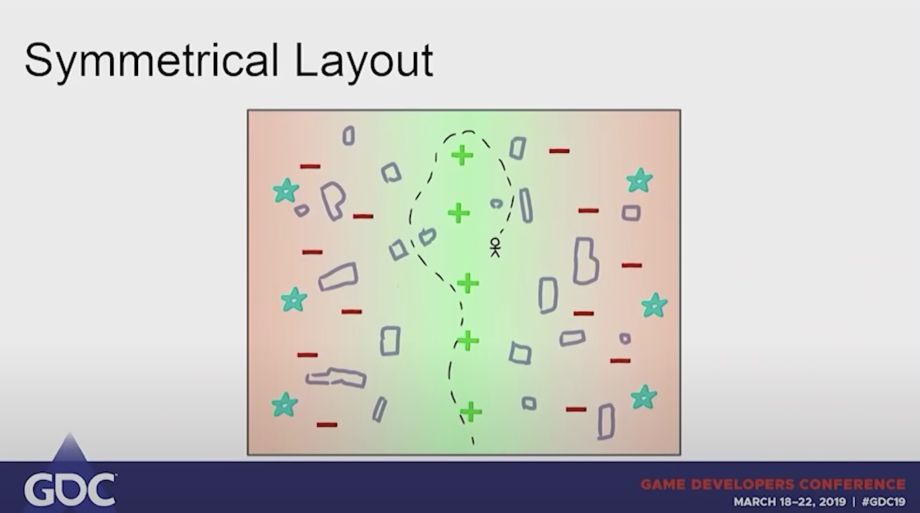
Symmetrical layout
The first is a symmetrical layout. Here we have a center line with relatively low fullness and the ability to select the left or right segment of the map. This is an interesting layout because the player can choose where to go. This helps break up the pace and create step-by-step progress. This is a great layout when the main feature of your map’s terrain is a path, such as a highway.
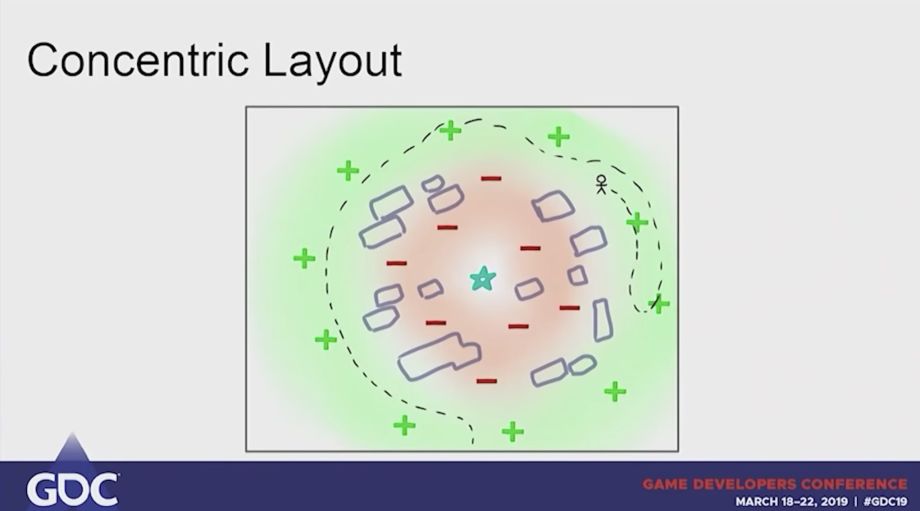
Concentric layout
In a concentric layout, the outer edge of the map is safer and rewards the player for scouting before diving headlong into enemy territory. These layouts work well for cards about attacking a base or castle.

Nodal Layout
The node layout is a series of free sections that are interconnected in some way. This map keeps the pace high because the player is constantly in danger and can only recuperate in small safe zones. Such a layout is ideally superimposed on ruins or slums.

Field layout
The “field” layout is a large area with a gradually increasing level of danger. This layout involves attacking or retreating to get into the best strategic position and gives the player a lot of control in terms of pace. This is a typical layout for something like a beach storm.
With all of these variations, it’s important to understand that you can create any layout you want, based primarily on your game mechanics.
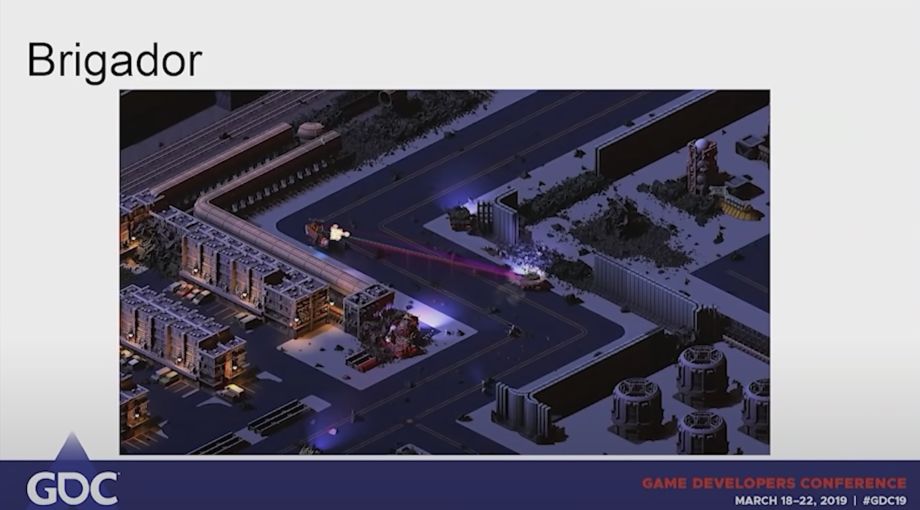
Brigador
Often the best thing you can do is pick one gameplay concept and play it to the fullest. Serre explains with the example of the game Brigador how to do it right. In this game, every part of the landscape can be destroyed, so the developers created layouts that maximize this aspect. The player has the opportunity to forge his own path to victory.
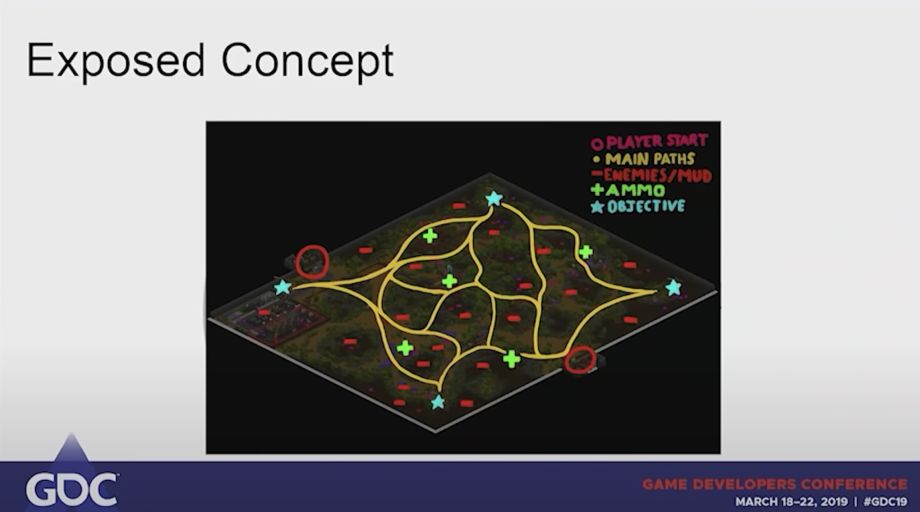
Another layout that Serre cites as an example is the exposed layout. The main feature is that the targets are located on different sides of the map, which makes the player vulnerable. This shows the importance of choosing a concept and layout that works well together.
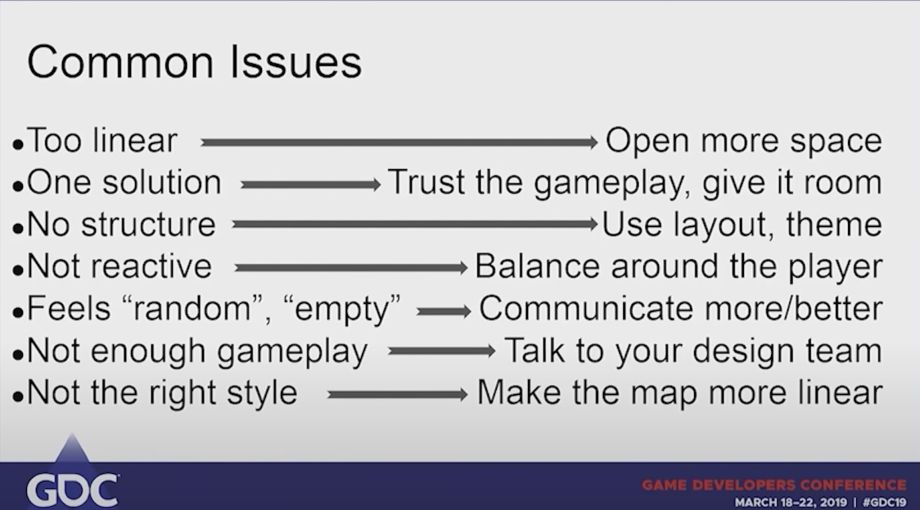
How to troubleshoot problems with non-linear levels?
At the end of the report, Serre talks about the problems that level designers may face when working on non-linear levels.
If your map is getting too linear, you should just add more paths and ways to move.
If you envision only one way to play the map, this can hinder the creation of an organic and dynamic gameplay system. It’s important not to try to limit your gameplay too much – you need to understand that good gameplay is fun in itself.
Another problem you might run into is that your game becomes too repetitive and sterile that it can even feel like you’re doing the same thing over and over again. You can avoid this problem by adding unique concepts and layouts.
In a game with overly dynamic systems, the player may begin to feel helpless. The level had to be balanced to be responsive to the player, and the player was a key element of the system.
Gameplay can feel random or inconsequential if the player cannot see the cause and effect of the systems enough to understand why something is happening. For example, in a stealth-based game, it’s better to add something like an audio alert to notify the player of new enemies approaching, rather than silently spawning them around the corner.
Many of these problems can be solved by tweaking the game mechanics, but if you don’t have a suitable mechanic, it would be a good idea to discuss with your development team the possibility of implementing it.
And finally, if your level goes against your playstyle, then it might be worth making it more linear. Yes, it’s a necessary evil, but it’s a compromise that needs to be made to make the game more organic.
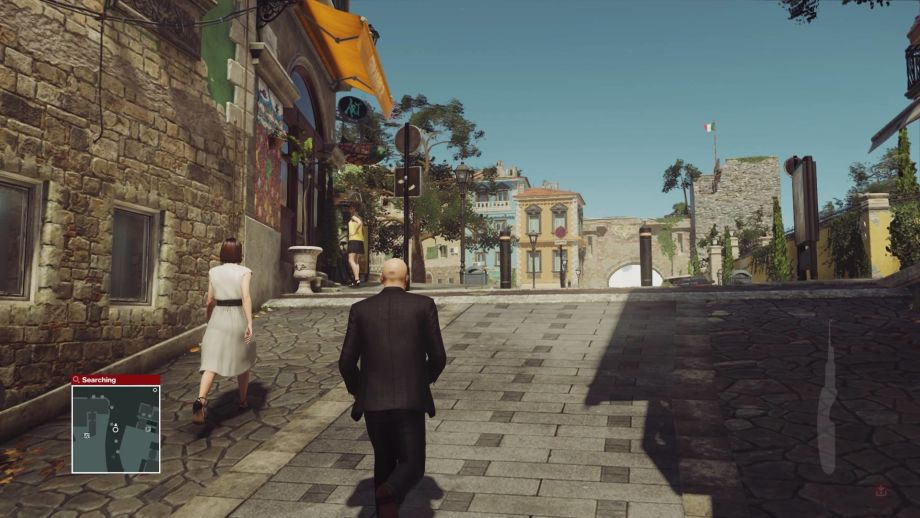
These were tips and tricks provided by Aubrey Serre as part of the GDC 2019. You can view the full report by going to this linkor ask Serra a question about level design directly at Twitter. Well, I hope these tips will help you create better and more exciting levels in your games.
The translation of the article was prepared on the eve of the launch course “Level Design”.



![20+ more games that pump logic, algorithms and delight the smart brain [по следам комментариев на Habr]](https://prog.world/wp-content/uploads/2022/01/kmxnwer2smdcbhq-6pjtlanyft4.gif)
